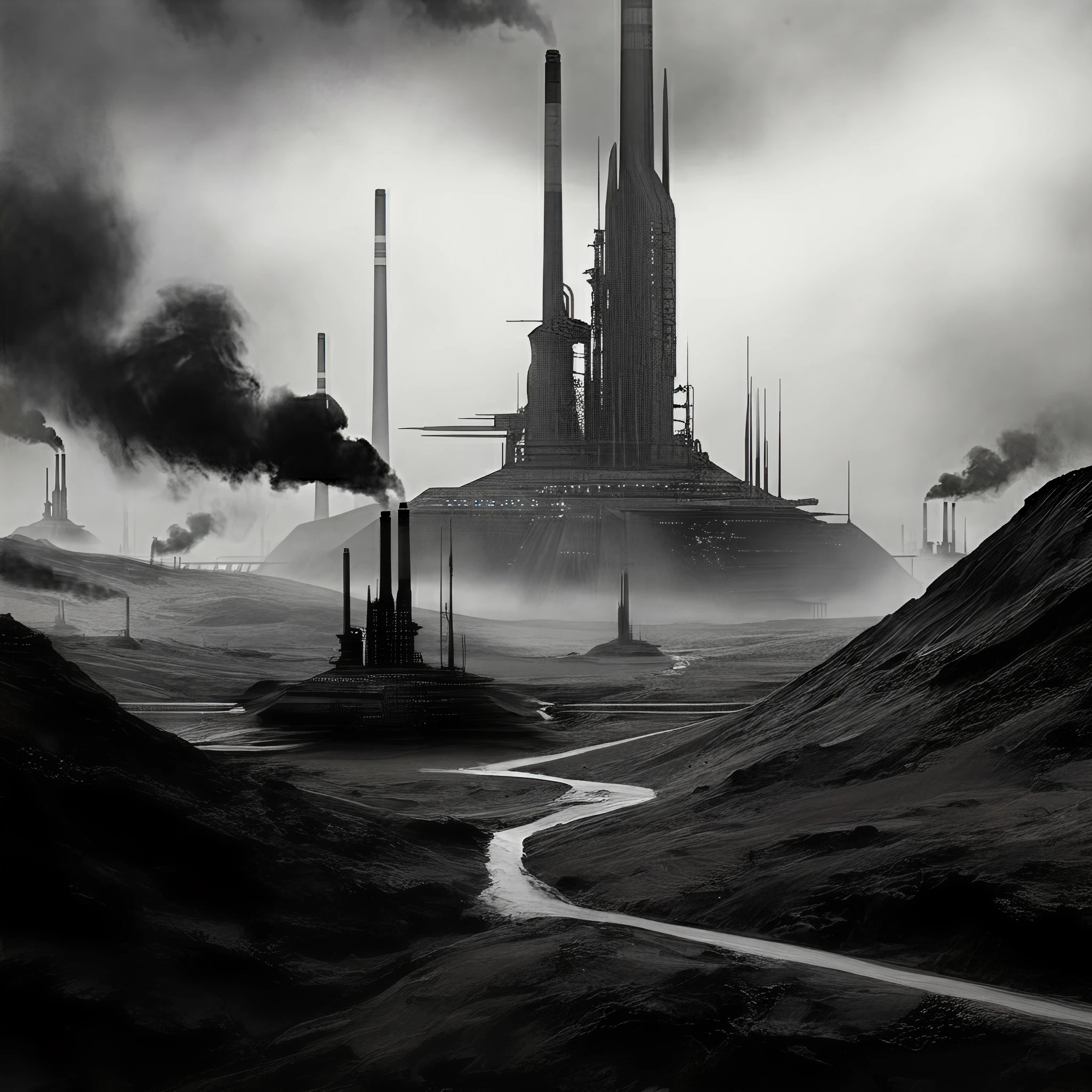The harsh, industrial world of Giedi Prime has always been one of the striking settings within the Dune universe. Known as the home of House Harkonnen, it’s depicted as a bleak landscape shaped by excessive greed, power, and corruption. But in Denis Villeneuve’s Dune adaptation, Giedi Prime takes on a unique aesthetic twist, standing out with its striking black-and-white portrayal. This choice has intrigued fans and filmmakers alike, raising questions about the symbolism and intent behind this stark visual design.
The Aesthetic of Black and White
The decision to present Giedi Prime in black and white was not random but a deliberate artistic choice. The high-contrast monochrome palette brings out the oppressive and dystopian nature of this industrial planet. It strips away any sense of warmth or life and instead accentuates the planet’s lifelessness and the cold ruthlessness of its inhabitants. Each towering piece of brutalist architecture, each shadow-cloaked figure is etched with a sense of raw power and unease.
This grayscale aesthetic immerses viewers in the twisted psyche of the Harkonnen family. From Vladimir Harkonnen’s heartless schemes to the cold efficiency of Feyd-Rautha, the black-and-white imagery strips the setting down to its bare emotional core, mirroring the moral void of its rulers.
Symbolism and Thematic Representation
Symbolism plays a significant role in Giedi Prime’s cinematic identity. The monochrome visuals communicate a world devoid of moral complexity, where the only concern is the binary of power and submission. Black and white often serve as metaphors for good versus evil, but in the context of Giedi Prime, the shades blur to emphasize moral ambiguity and decadence.
The decision echoes Denis Villeneuve’s aim to show rather than tell. The absence of color forces the audience to focus on shapes, shadows, and textures, amplifying the stark brutality of the planet while aligning thematically with House Harkonnen’s authoritarian rule.
Greig Fraser, the cinematographer for Dune, shared insights during an interview with The Hollywood Reporter, noting that “black and white allowed us to focus entirely on the planet’s bleak, industrial soul, where every shadow tells its own story of cruelty and history.”
The Director’s Vision
Villeneuve’s reinterpretation of Giedi Prime stems from his mastery of visual storytelling. He communicated in past interviews that the black-and-white aesthetic allowed him to create a heightened sense of unease and otherworldliness, isolating Giedi Prime visually from the other locales of Dune.
“[The choice of black and white] wasn’t just about making it look cool,” Villeneuve said during a Q&A. “It’s about creating a visceral feeling in the audience that this place is inhospitable and treacherous, aligning perfectly with the ethos of House Harkonnen.”
This creative decision not only differentiates Giedi Prime from other planets but also elevates it as a character in its own right within the narrative.
Comparing Representations of Giedi Prime
Giedi Prime has been reimagined across various adaptations, from David Lynch’s colorful 1984 Dune to the detailed world-building of the SyFy miniseries. However, none match the impact of Villeneuve’s version.
Where Lynch’s Giedi Prime leaned into a dramatized, almost campy industrial feel, and SyFy offered a more realistic but unremarkable portrayal, Villeneuve’s stark vision redefines the planet as an unforgettable visual spectacle. The minimalist approach succeeds not only in impressing the audience but also in conveying the story in a sophisticated, nuanced way.
Audience Reception and Impact
The black-and-white depiction of Giedi Prime has garnered significant acclaim from both fans and critics. Audiences have praised its ability to stand out as a visual focal point in the science fiction epic. The high-contrast visuals resonate emotionally, leaving a lasting impression beyond the theater.
Critics have highlighted how this aesthetic grounds the film as an artistic achievement, distinguishing it from the conventional use of color-heavy CGI worlds in science fiction blockbusters.
Cinematic Techniques to Achieve the Effect
Behind the scenes, Villeneuve’s creative team employed a combination of infrared camera technology and meticulously designed sets to achieve Giedi Prime’s distinctive look. By manipulating light and shadow, they crafted environments that highlighted industrial decay while enhancing the characters’ menacing presence.
The use of brutalist architecture on Giedi Prime further enhances its industrial theme. Monolithic structures loom ominously, underscoring House Harkonnen’s domination. Every frame feels hand-sculpted to evoke dread, matching the planet’s role in the narrative.
Concluding Thoughts
Denis Villeneuve’s choice to depict Giedi Prime in black and white isn’t just an aesthetic experiment; it’s a calculated storytelling device. The monochromatic palette breathes new life into this infamous world, turning it into a visual and thematic masterpiece that captures the essence of House Harkonnen’s cruelty and ambition.
Villeneuve’s approach ensures Giedi Prime will remain etched in fans’ memories as one of the most powerful and haunting depictions in cinematic history. If you haven’t yet experienced Dune’s striking visuals, now’s the perfect time to immerse yourself in this cinematic universe.
Suggested Images to Complement the Article
- Gritty Cityscape of Giedi Prime
A black-and-white, high-contrast representation of Giedi Prime’s brutalist buildings under a polluted sky.
- Character Highlight
A close-up of Vladimir Harkonnen shrouded in shadows, emphasizing the stark contrasts in his expression.
- Abstract Architectural Detail
Monolithic walls with harsh lighting to highlight the rawness of the industrial design.
- Atmospheric Scene
A grayscale image showing workers or drones in a factory setting to depict the oppressive environment.








